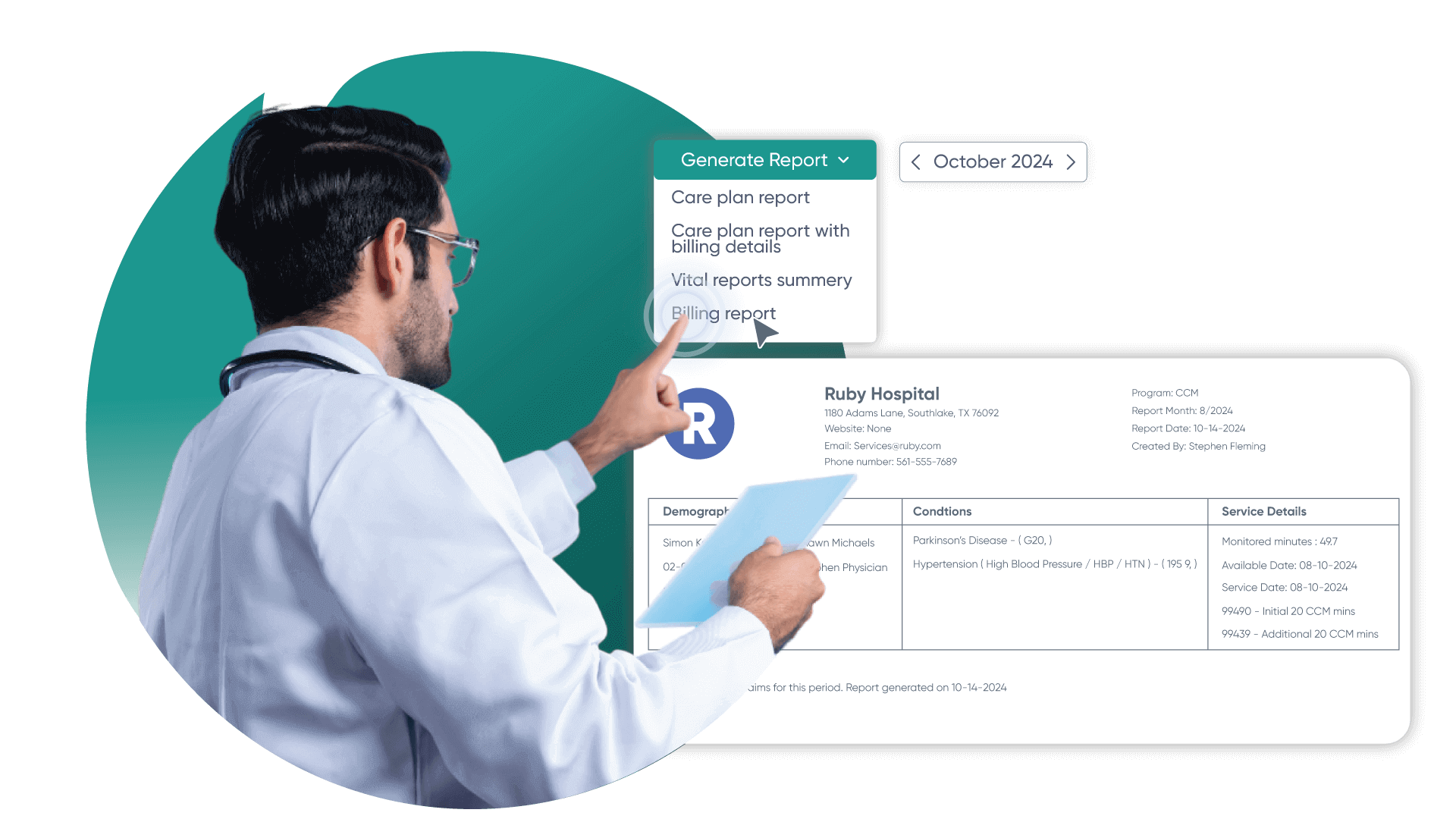Client Background
The client is based in Texas. Dedicated to providing comprehensive chronic care services to individuals navigating multiple chronic conditions. The client has dedicated staff to seamlessly deliver medical expertise, focusing on delivering unparalleled patient services. To maximize the effectiveness of patient care services, the client aims to consistently provide exceptional and tailored healthcare services along with maximizing reimbursement.
Business challenges
With the existing CCM Software system, the client faced many challenges in managing CCM patients effectively, leading to low patient retention and declining recurring revenue generated by Chronic Care Management (CCM) services. This was primarily due to the absence of efficient patient and practice management tools, directly impacting practice productivity and efficiency.
Some of the major challenges the client encountered are mentioned below:
1. Tedious Onboarding and Enrollment Process
The existing software was incapable of onboarding and enrolling patients into their care programs efficiently. Manual processes for patient registration and consent management consumed valuable time and resources, leading to reduced productivity and hindering the ability to scale patient enrollment.
2. Limited Communication Options
The client struggled with inefficient communication methods in the existing system. This hindered their ability to remotely engage with patients for clinical reviews and care plan management, resulting in suboptimal patient care and decreased practice efficiency.
3. Lack of Customizable Communication Templates
Maintaining consistent and personalized communication with patients was challenging with the existing software. The absence of customizable email and SMS templates led to inefficiencies in communication, increasing the burden on care providers and potentially impacting patient engagement and adherence to treatment plans.
4. Manual Billing Processes and Reporting
The client encountered difficulties in accurately tracking and documenting billable activities and generating comprehensive billing reports.
5. Paper-Based Documentation Practices
Lack of digitized documentation and audit trail capabilities hindered accurate record-keeping and reporting, impacting reimbursement and compliance with regulatory requirements.
Hence, the client rectified the need to implement chronic care management software to increase the quantum of services for managing patients effectively. To overcome the above challenges and earn maximum reimbursement, the client approached Medarch Inc. for eCareMD software to deliver effective patient care with increased care coordination and continuous monitoring.
Solution
To understand the exact business challenge and requirement of the client, our team of business analysts and subject matter experts took multiple calls and demonstrations. Upon several discussions and the client's approval, we have implemented the eCareMD chronic care management software in the client’s practice. With the software implementation, the client achieved maximum reimbursement with a lesser number of medical staff.
Solution Highlights
The eCareMD software consists of various features that help care providers and practices streamline the practice workflow and achieve maximum reimbursement with adequate quality of care.
1. Easy Onboarding and Enrollment Process
To manage high patients, the onboarding and enrolling process should be quick. Doing it manually leads to the consumption of time and use of manual resources that may affect productivity. The eCareMD software enabled the upload of CSV files, allowing the provider to register thousands of patients within the platform at once. Also, it helped to send consent over email to multiple patients within a second. It results in increased efficiency for practice and reduces time spent on manual onboarding and enrollment processes.
2. Increased Communication Facilities
Day-to-day practice requires care providers to physically attend to more patients inside healthcare facilities for activities such as daily, weekly, or monthly clinical reviews, emergency visits, and more. The implementation of eCareMD software helped the staff to perform clinical activities remotely in a non-face-to-face virtual ecosystem. Using the software, care providers can make an instant call, send text messages, or email to patients along with care plan management. These functionalities allowed care providers to manage more patients in less time and more conveniently.
3. Customizable Templates
While managing more patients, effective communication is required to keep the patient engaged and adhere to the treatment plan. The eCareMD software enabled care providers to create, customize, and store email and SMS templates for various activities to be sent to the patient. It enabled the quick sending of these emails and reduced the manual intervention of drafting emails and text messages.
4. Automated billing and report generation

The automatic time gets logged for each activity done by the care provider over the patient profile. Based on the program, treatment activity, and time spent on the patient profile, the software displays the accurate CPT codes for billing and enables care providers to download the comprehensive monthly billing report. It reduced the manual activity to track time for each service provided and documentation of billing codes that may lead to human errors and claim denials.
5. Digitized documentation
The eCareMD software enabled providers to create care plans and activity reports electronically, increasing accuracy and documentation and helping increase reimbursements. The software automatically generated an audit report of all activities carried out by the provider over the patient profile during the treatment. These electronically generated reports reduce manual efforts and time spent creating and storing physical documents.
Value Delivered
1. Increased Efficiency of Practice Staff
The adoption of eCareMD software has considerably boosted the efficiency of practice staff, allowing a team of fewer care providers to manage a larger number of patients.
2. Increased Revenue for Practice
Practice generated significant money. The software could now handle a larger patient population and reduce the manual effort and time spent.
3. Increased Patient Satisfaction and Engagement
The software enabled continuous interaction with patients using secure communication channels, quick onboarding, and patient enrollment. Hence, care providers could spend more time on patient treatment, improving patient satisfaction and engagement rates.
4. Effective Healthcare Delivery
Features like alerts and notifications, scheduling recurring calls, and task management improve patient care and care coordination.

